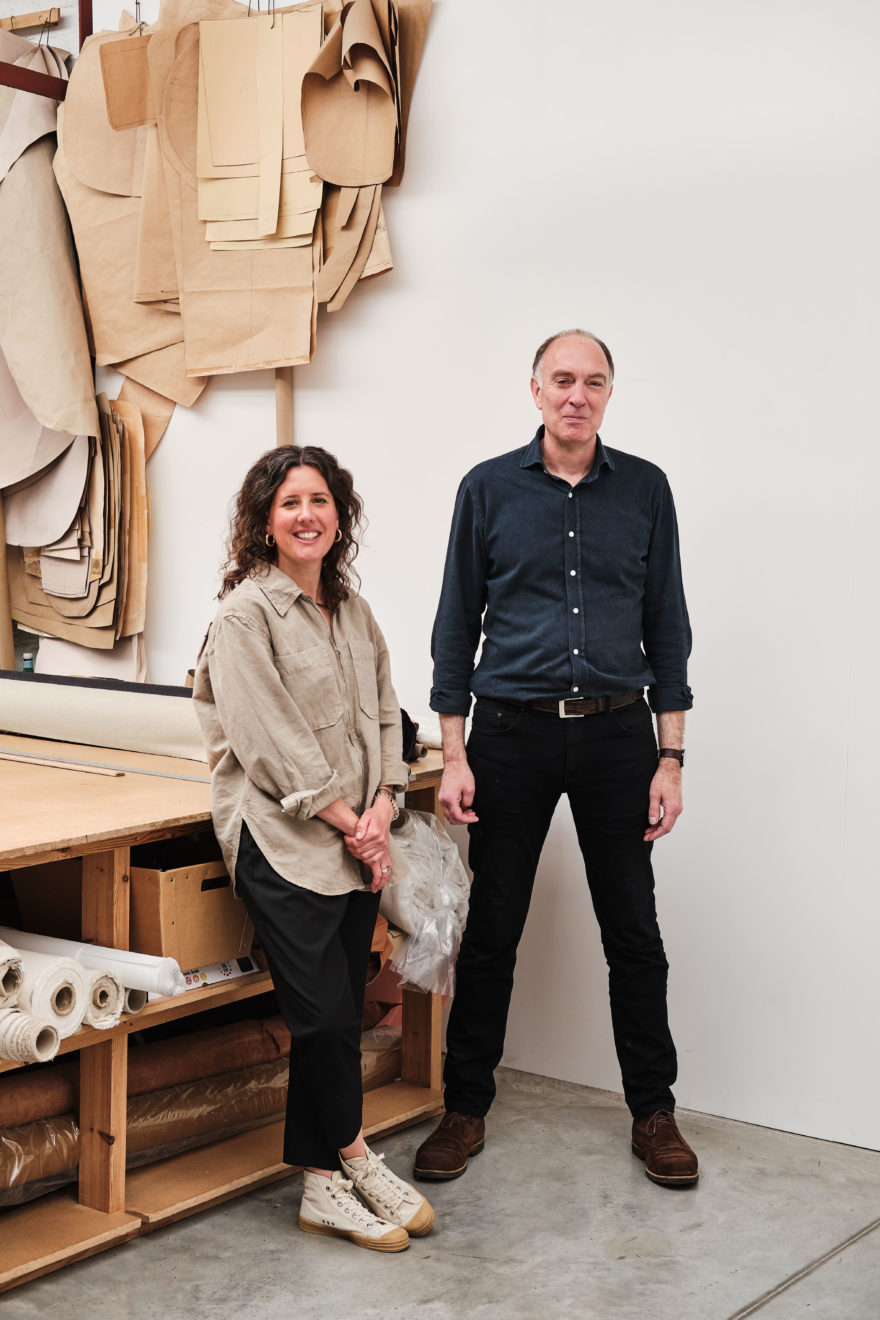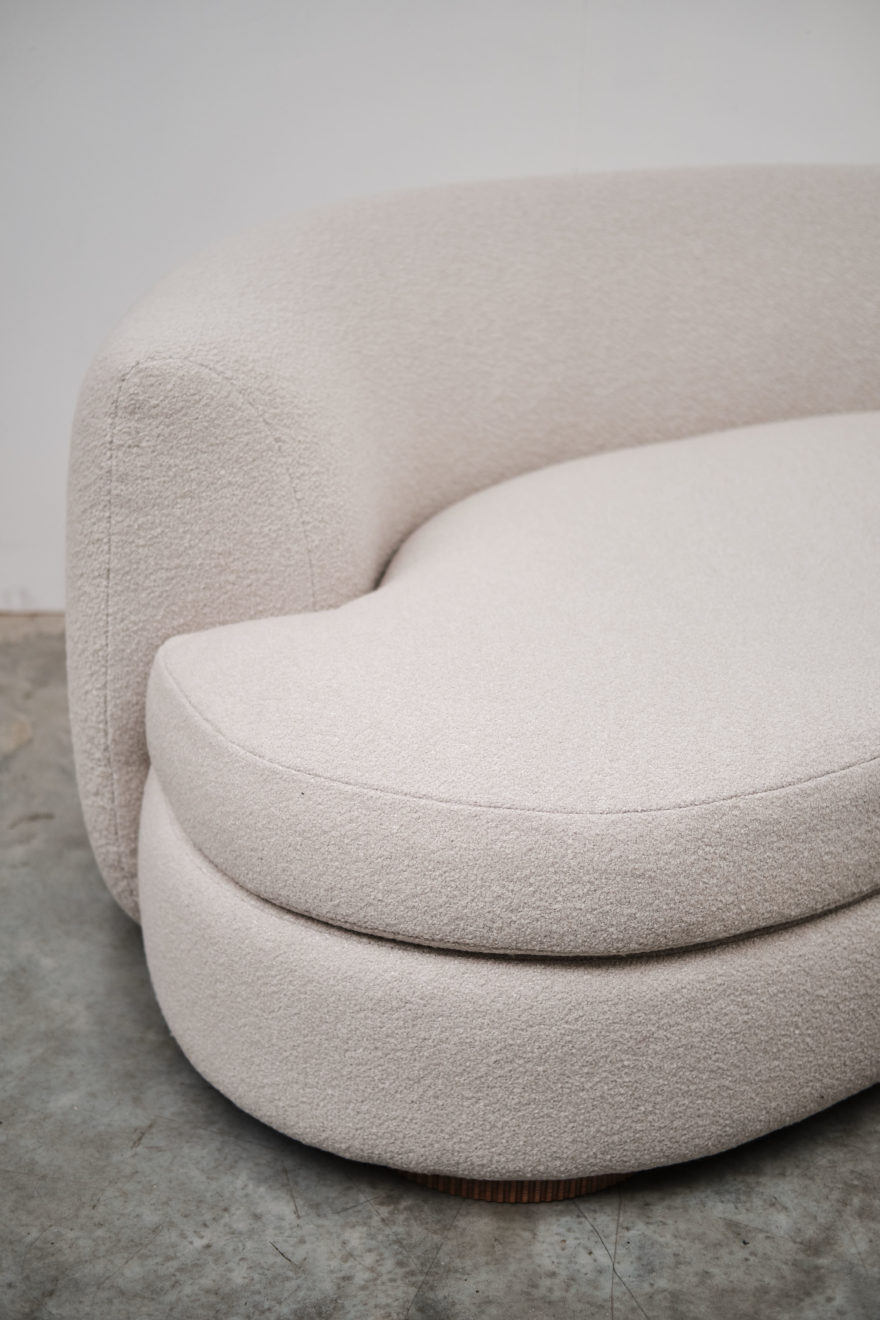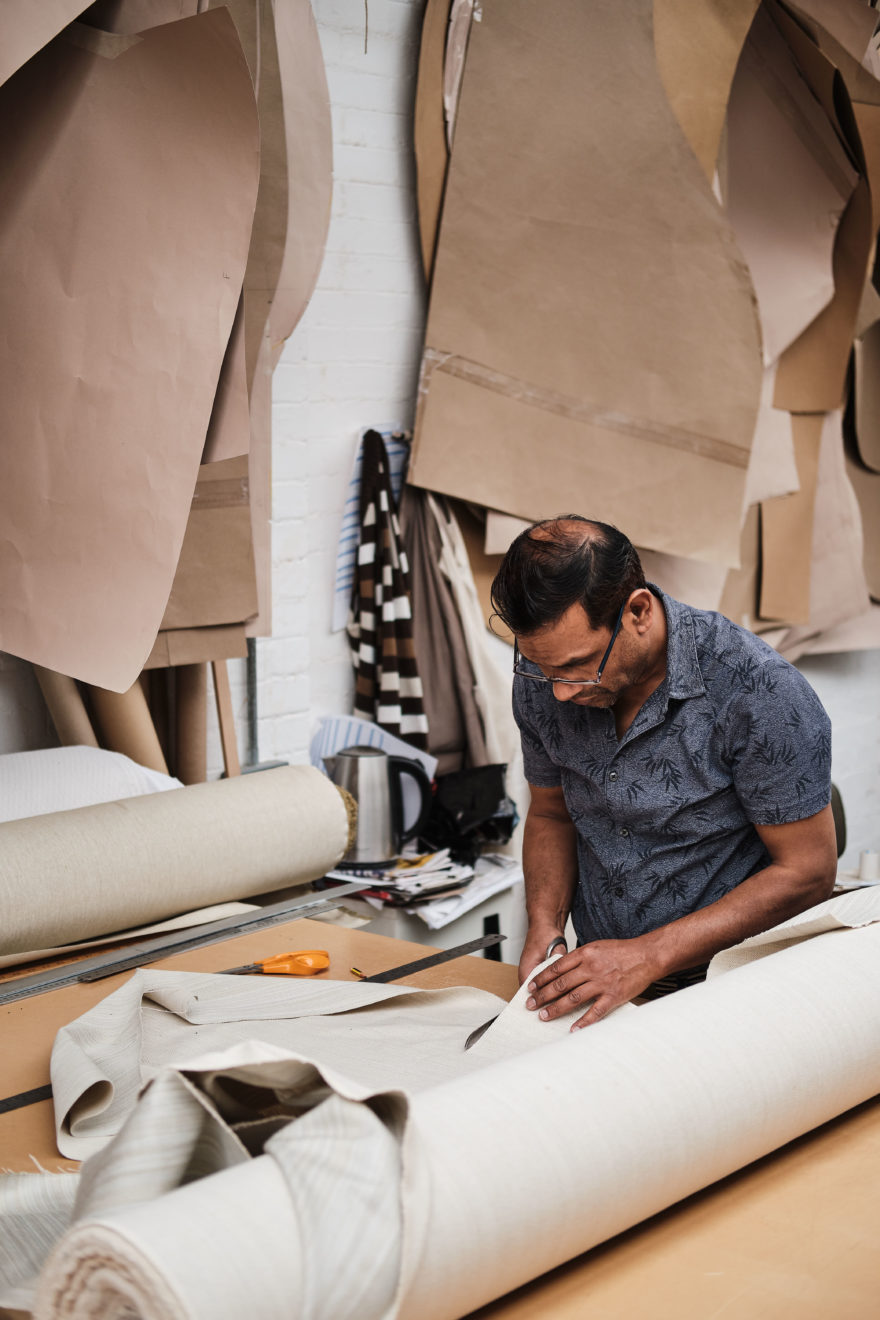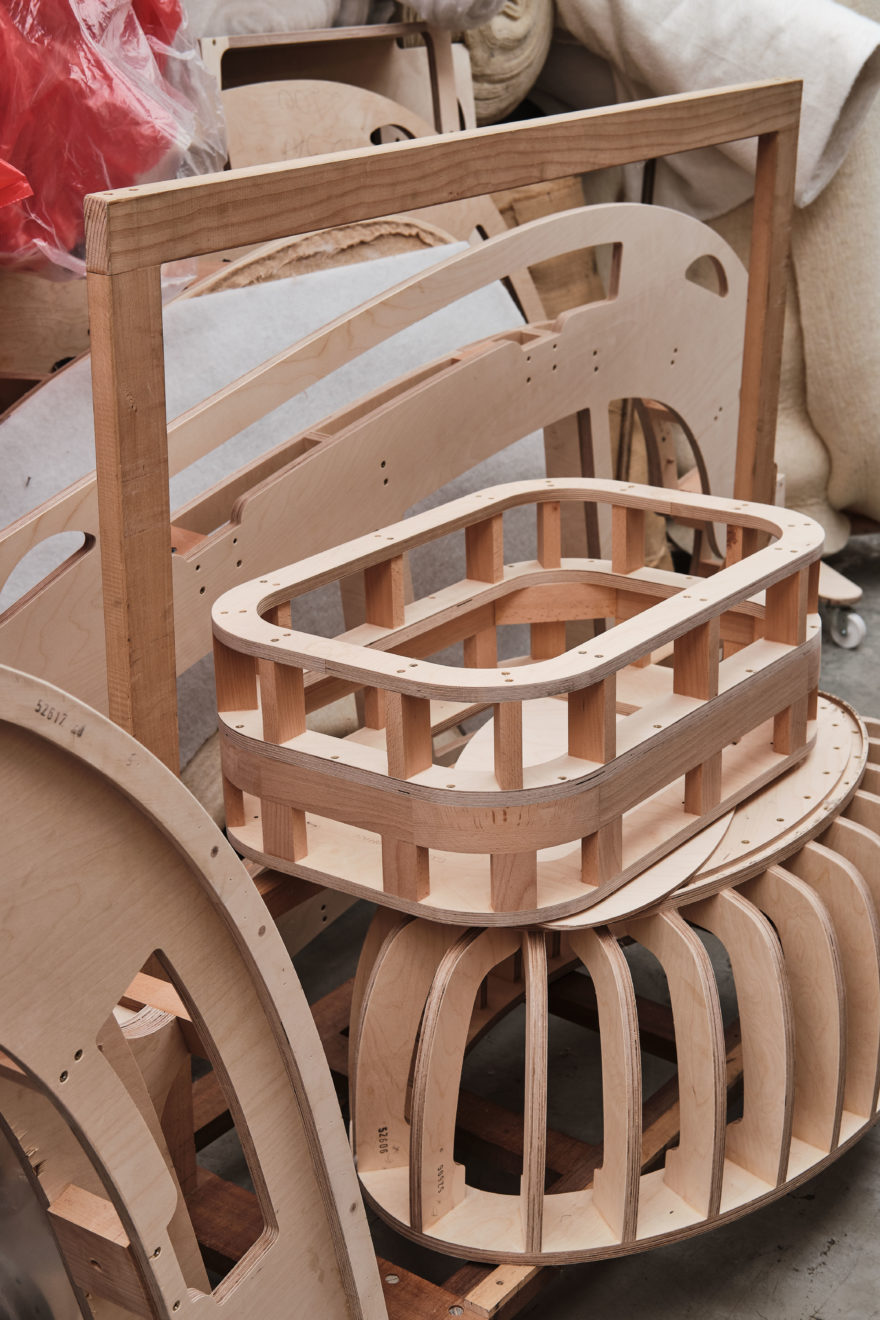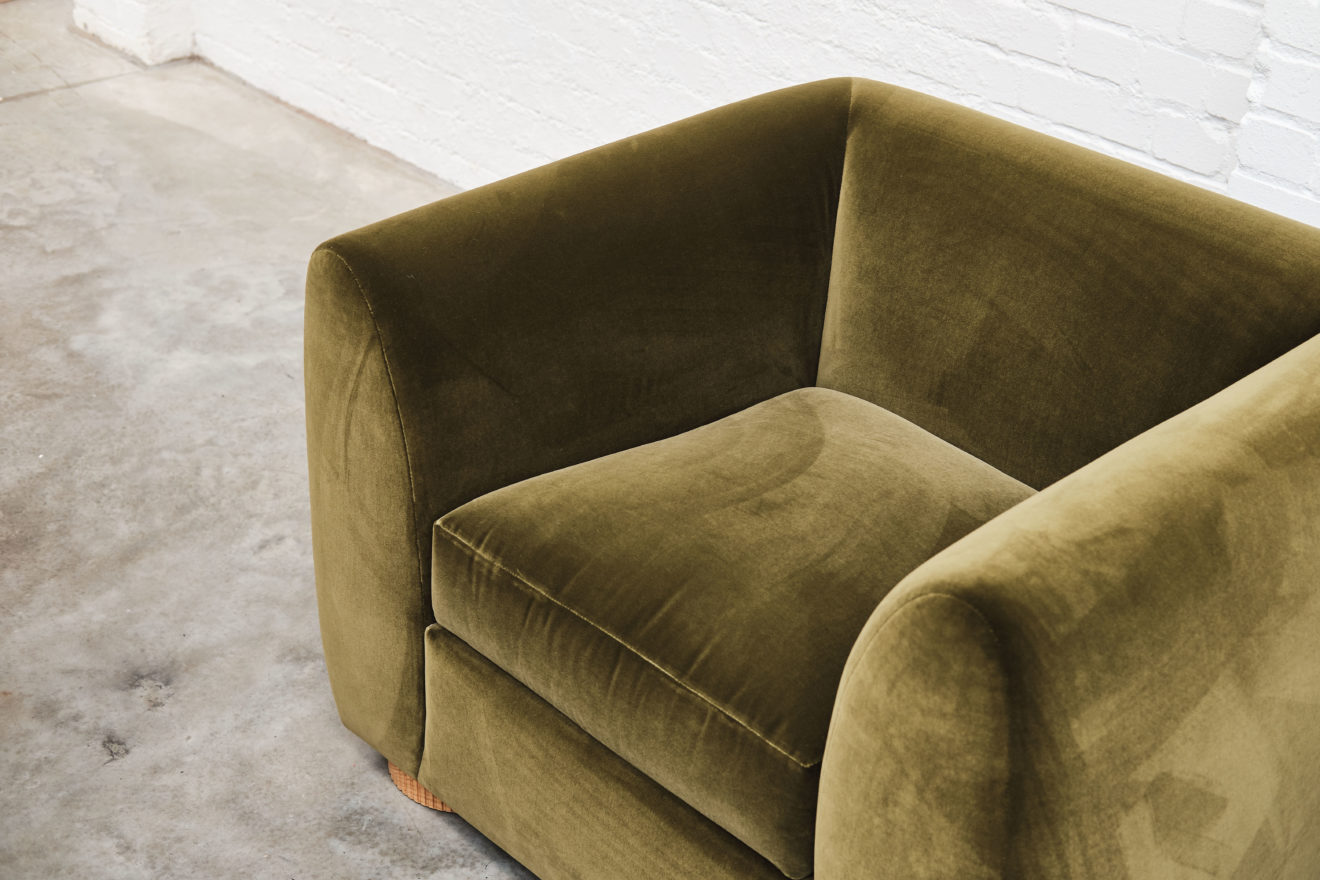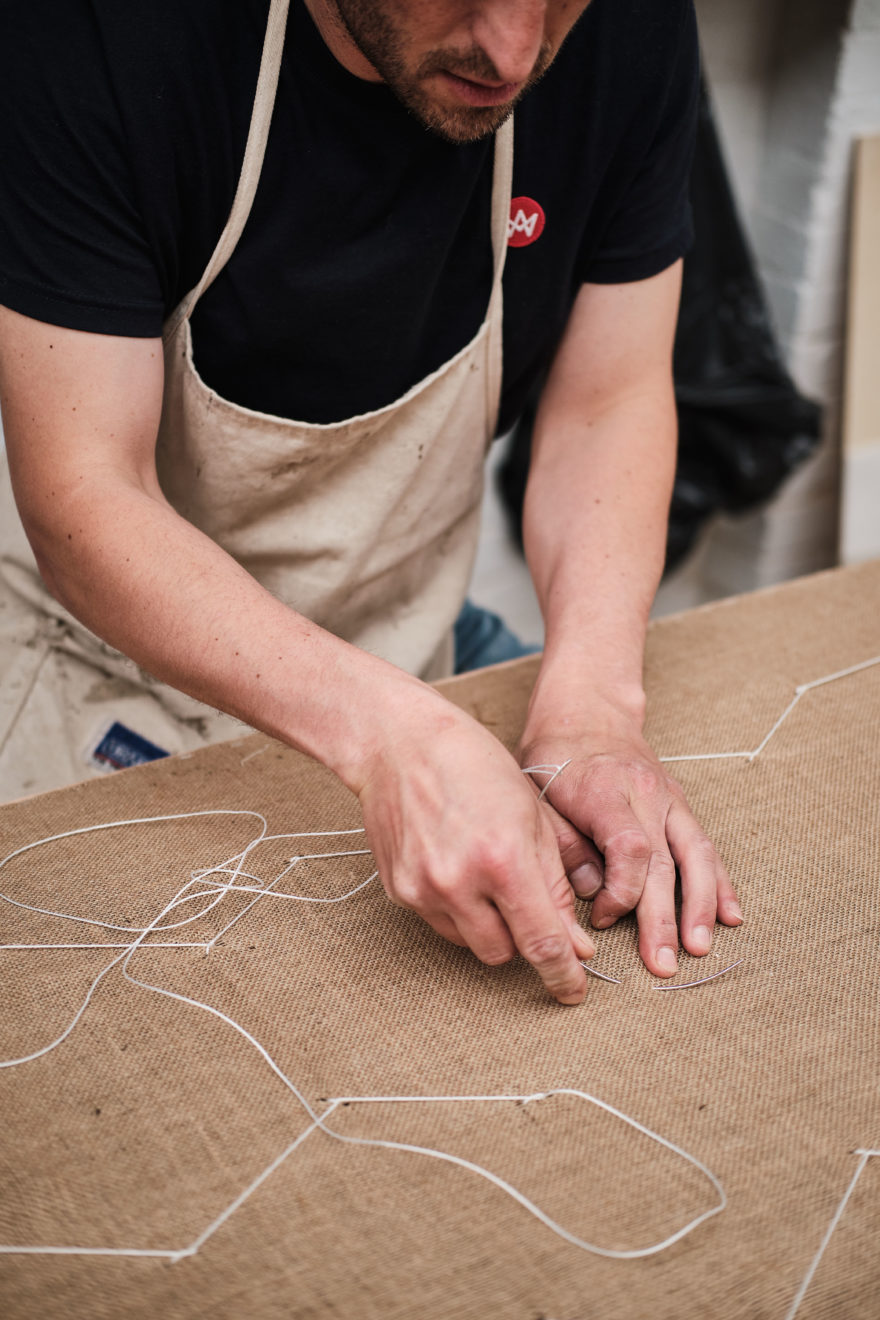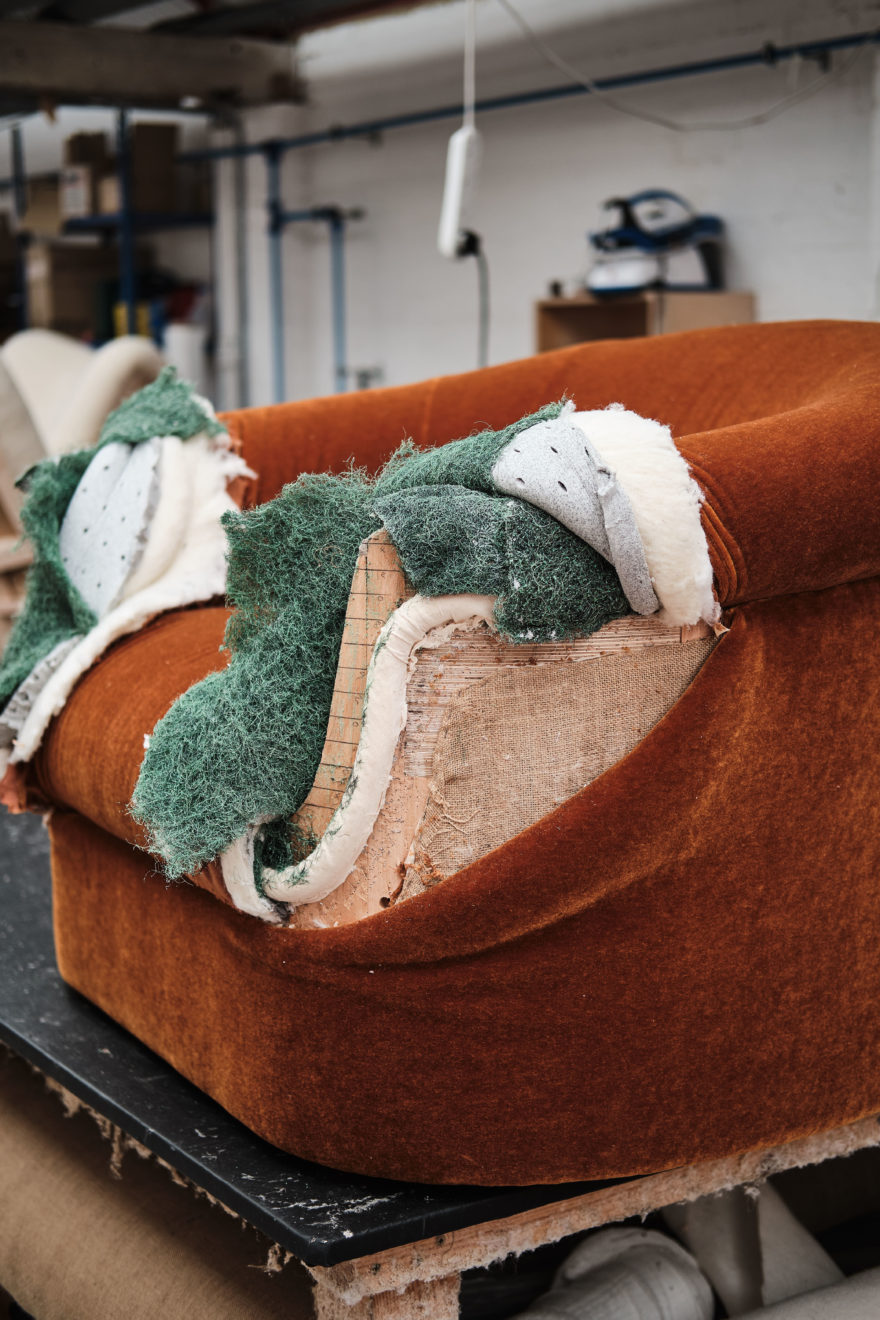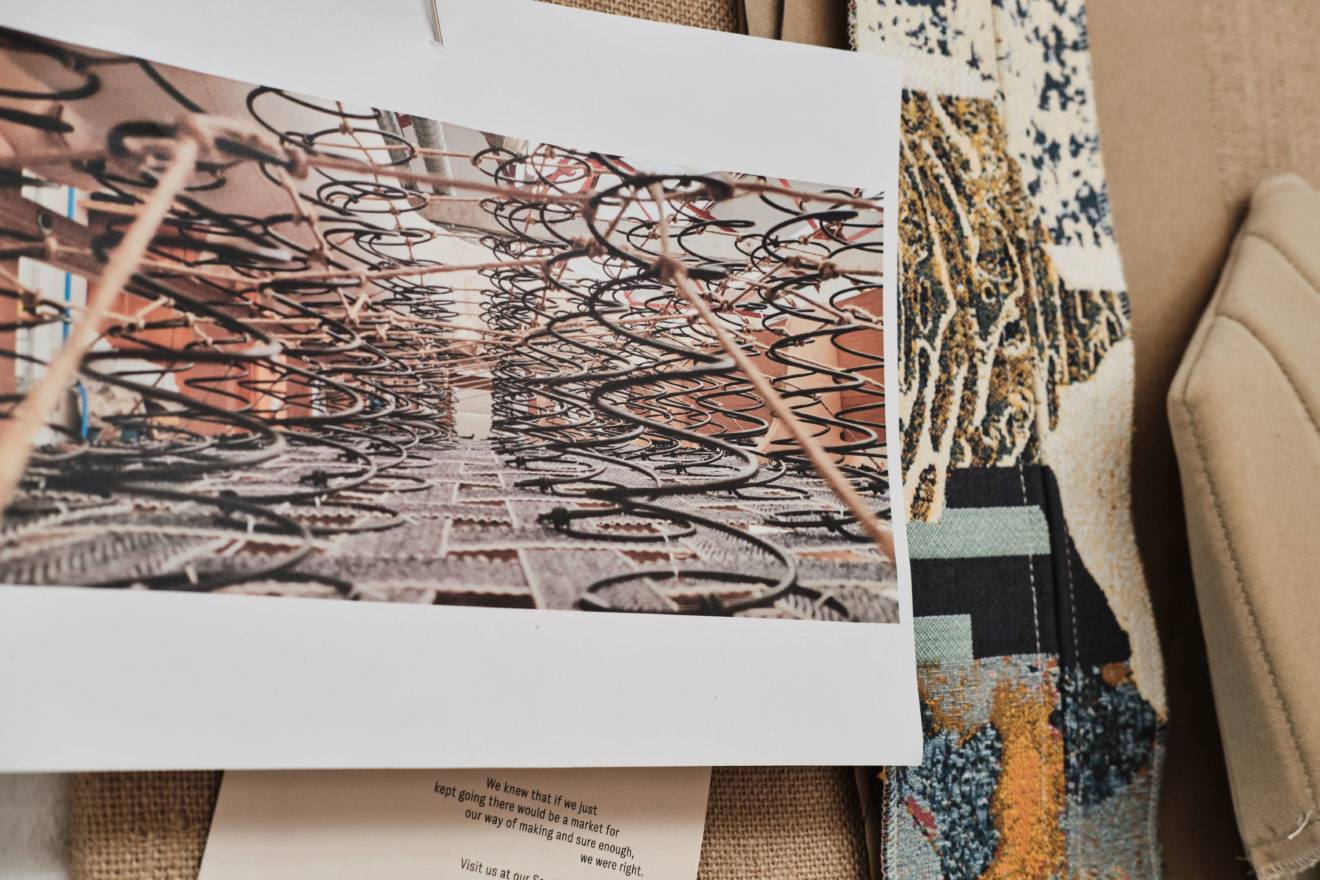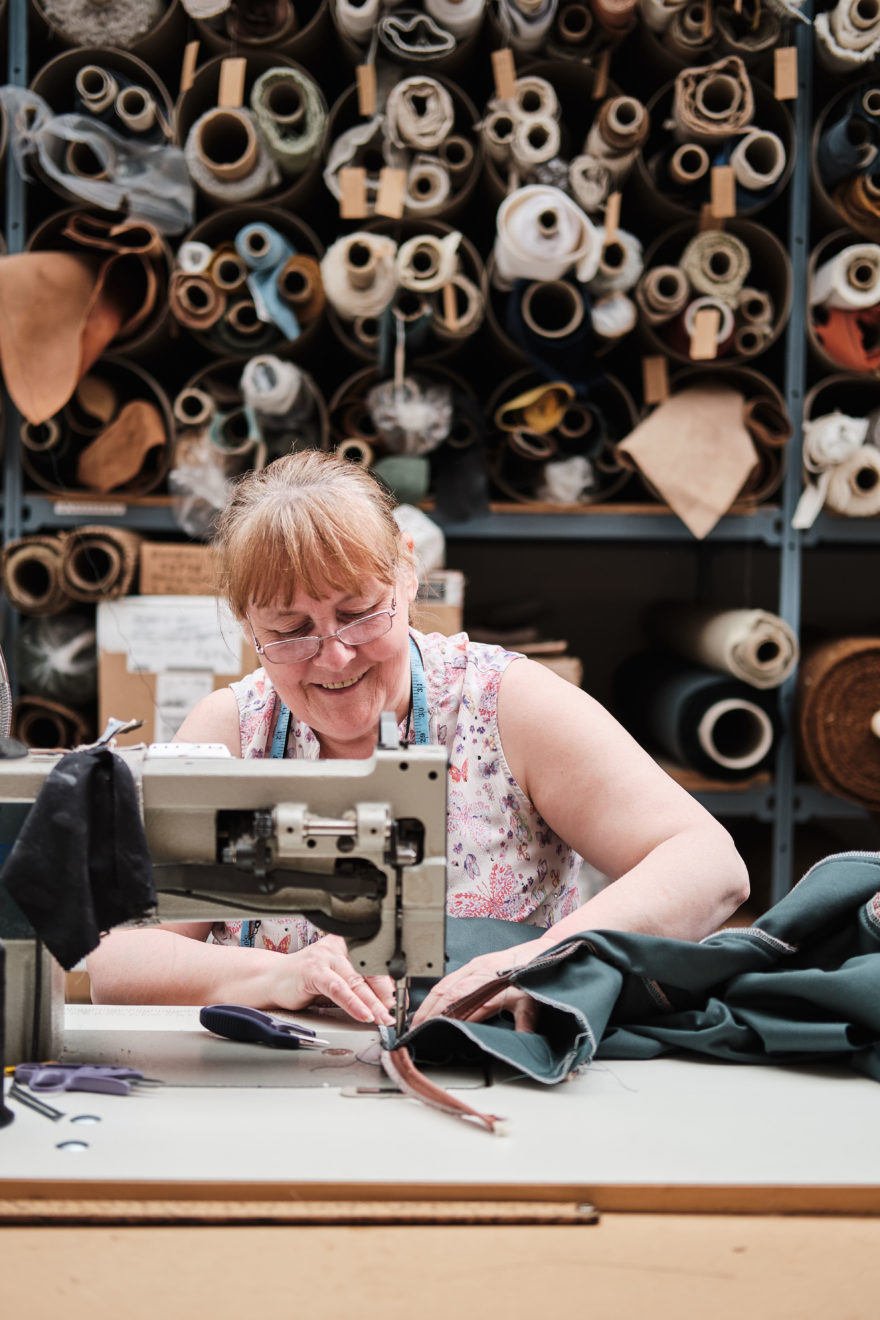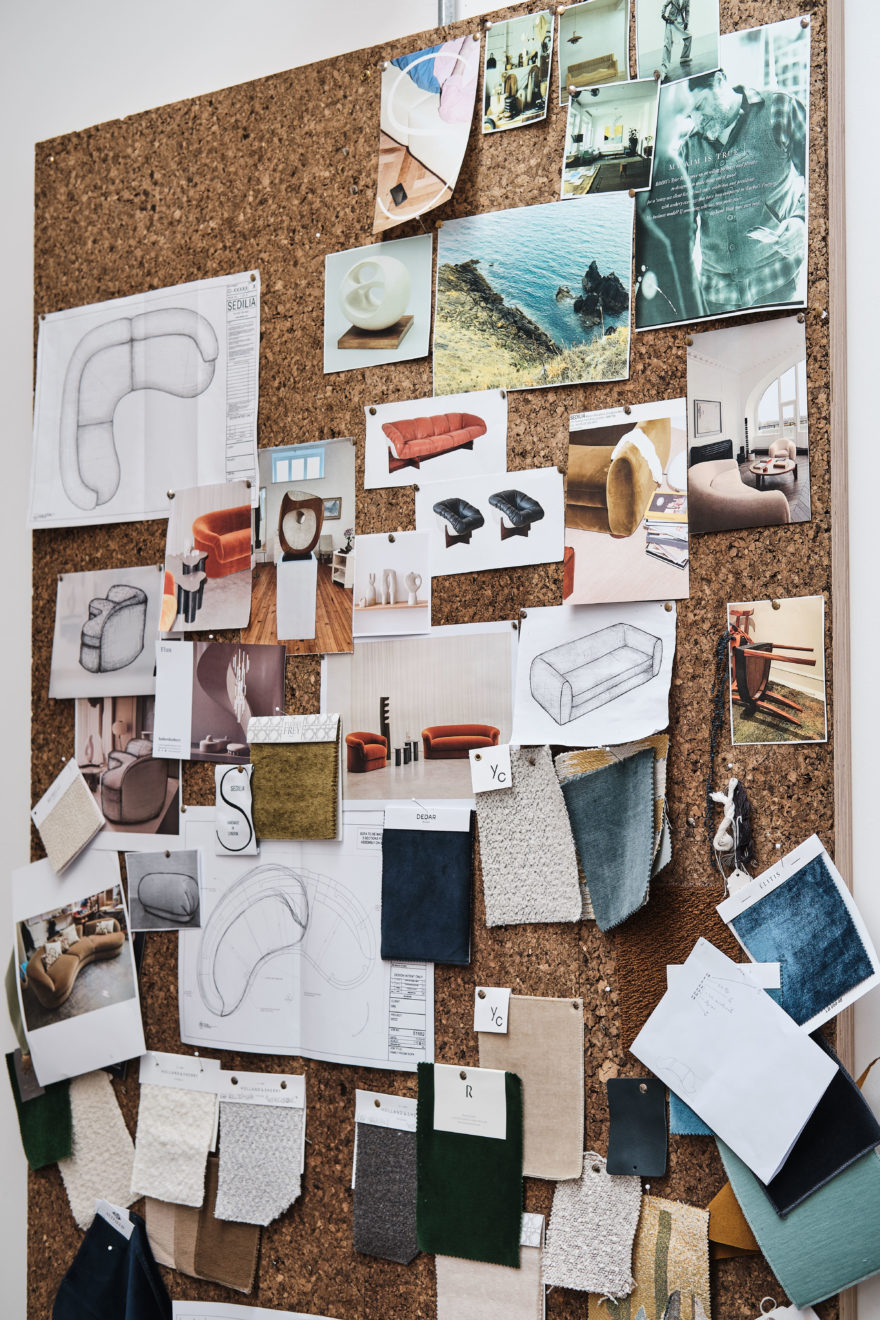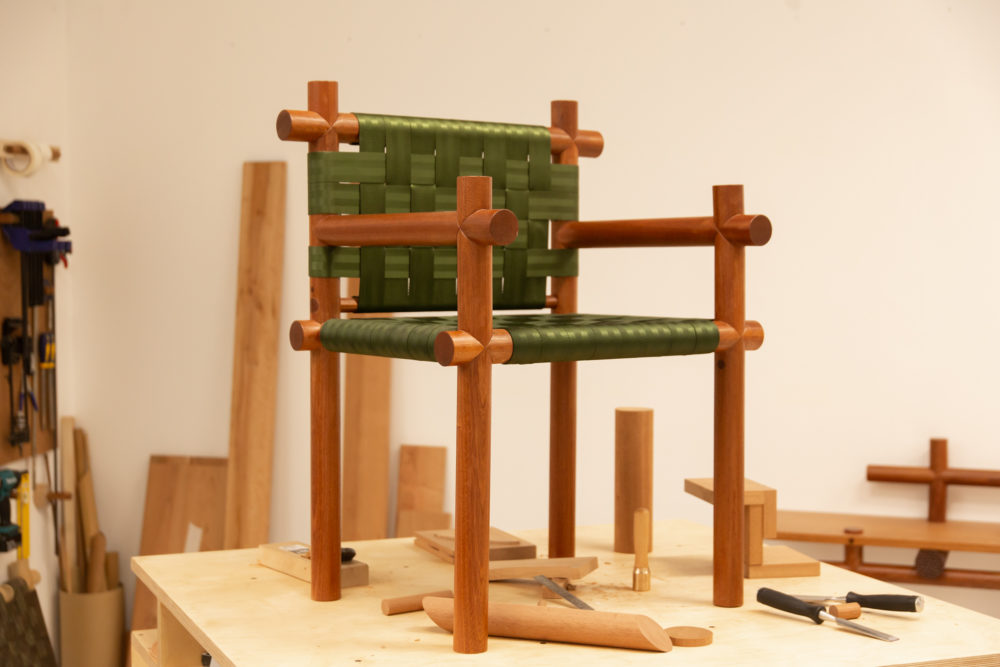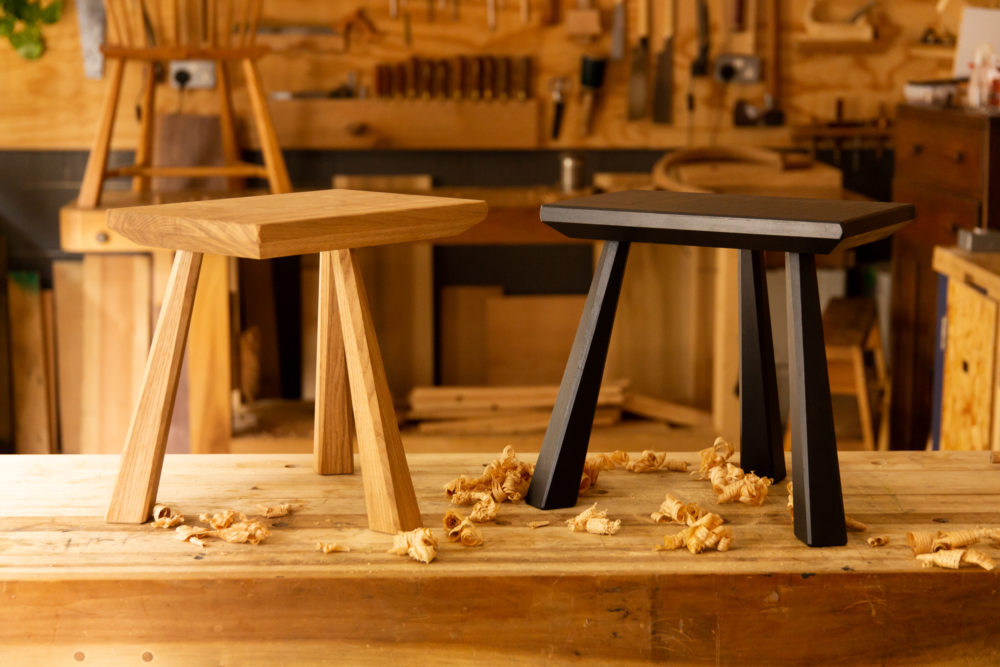Sedilia
Sedilia unfolds behind the unassuming façade of an SW4 postcode. The smartly painted double doors, with their contrasting logo in crisp white, hints to the aesthetic sensibilities beyond. But it’s only when you step over the threshold that you realise the extent of the operation that’s so neatly tucked away on this Clapham through-fare. Like Sedilia itself, the workshop goes back quite a way; a stretched concertina of each and every process that goes into a Sedilia creation, harmoniously working side by side, under one lofty long roof.
Since its establishment in 1998, Sedilia have produced custom and bespoke furniture for leading interior designers, and launched their own collection, which celebrates their extensive experience and elegant style. We visited Sedilia to chat to its founder, Robert Stephenson, and Head of Collection, Alice Lockerbie, to discover all that goes into a Sedilia sofa, and what has been learned and mastered over a 20 year – and counting – career in the craft.
I come from a family of makers and artists, so the urge to make came naturally. I opened my own workshop after working in the trade for many years. I was frustrated by the lack of quality or innovation in the UK upholstery market and felt there was scope for me to take a fresh approach, putting quality, integrity, and innovation first.
I have been told I approach my upholstery as a cabinet maker, and I take that as a compliment. Clean, crisp lines and good proportions transform the character of any piece of furniture, but it seems to apply even more to upholstery. It is significant that a classical training as a cabinet maker covers issues such as design and proportion, but this is not covered when training to be an upholsterer.
After studying Interior Architecture at University, I began my design career in the residential design team at David Collins Studio, where I was involved in designing high-end interiors and bespoke furniture. I met Robert on site whilst installing a home in London and was very taken with the quality of the work Sedilia had made for the project. Wanting to explore a more ‘hands on’ approach to design, I joined Sedilia as an upholstery apprentice. Despite having very different backgrounds and skill sets, Robert and I share similar tastes and instinct for design, and together put the plans in place to launch our own collection of furniture.
At Sedilia, we are well versed in both modern and traditional techniques and materials. Each technique or material has its own advantages and disadvantages. I see no reason to limit ourselves by being in either the traditional or modern camp, so our approach is to use the most appropriate technique or material for each specific use. This leads to a combination or a hybrid solution.
Sedilia is built on its bespoke work. We are proud of the reputation for excellence we have built over so many years. Working with some of the best designers in the world is an enriching experience, so designing and making our own collection of furniture felt like a natural progression, on both a creative and business basis.
We are innately drawn to a timeless design aesthetic that defies passing trends or fads, so feel an obvious affinity with the classic mid-century Scandinavian designers. The honesty and integrity of the Arts and Crafts Movement has a deep-rooted place in Robert’s core, whilst inspiration from the monumental work of artists such as Henry Moore and Barbara Hepworth are clear to see in our work.
Designs tend to start with sketching our ideas and making small scale mocks-ups of new shapes we like. Once we decide on the general direction of a design, we move onto producing technical drawings to refine the proportions, composition, and functionality. The framework is the skeleton of the piece and defines the finished shape, so we always create a detailed 3D frame drawing to make sure that the design intent is translated accurately into its 3D form. Quite often we will make 1:1 mock ups of certain details that we want to prototype first, and having our makers in house makes this an accessible part of the development process. Our drawing work is then handed to the production team, who translate the design from paper to real life product. A design can take anything from a few weeks to many months to develop and refine before we are happy with the finished result. Our workshop is divided into three making teams – frame makers, upholsterers and the cutting and sewing team.
At Sedilia we place equal importance on our design work as we do our making. Having everything under one roof means our designing can inform our making, and our making can inform our design work. This was the idea behind our tag line ‘Makers Designers, Designers Makers’ – both are symbiotic at Sedilia. Having our design and making teams working side by side under one roof means we take control of the entire creative process, which we believe is key to the success of our designs.
London is one of the leading global centres for interior design and the vast majority of our trade clients are based here in Central London, so being on their doorstep has always been vital to us. Our way of working means there is a great deal of communication between ourselves and our clients, so it is wonderful that our clients are so easily able to pop over to the workshop to see work in progress or discuss a design face to face.
Also, of course, London is such an inspiring and exciting city in which to live and work.
Sedilia is built upon craftsmanship and relationships. When our clients place an order with us they place a great deal of faith in our ability to produce what they have ordered, be it a bespoke design or a Sedilia Collection piece. Recognising and honouring that faith is key to the relationship we have built with our clients. Our rule has always been that nothing ever leaves our workshop unless it is immaculate. That is why we have leading designers who have been our clients for over twenty years.
A fundamental aspect of our design philosophy is our passion for purity of line and form. In practice this means refining by removing, bringing only the essential elements into focus. For example, the focus will be drawn towards a beautifully executed shape and the overall balance and proportion of a design. In our opinion, this reductive style of design is timeless design. From a practical point of view, our furniture is handcrafted to last a long time, so it’s important that our designs can sit comfortably in a home for many decades.
Style, comfort, and joy.
Yes, absolutely. Many aspects of the way we make furniture is already a sustainable approach. Our most recent designs – the Roll Top Sofa and Roll Top Chair – are crafted using only responsibly sourced, all-natural upholstery fillings. We are currently sourcing and introducing sustainable alternatives to PU foam and other synthetic fillings. Many of our house fabric offerings are supplied by Yarn Collective, who specialise in sustainable luxury furnishing fabrics – their fabrics use recycled cotton and linens from leftover waste from the fashion industry.

